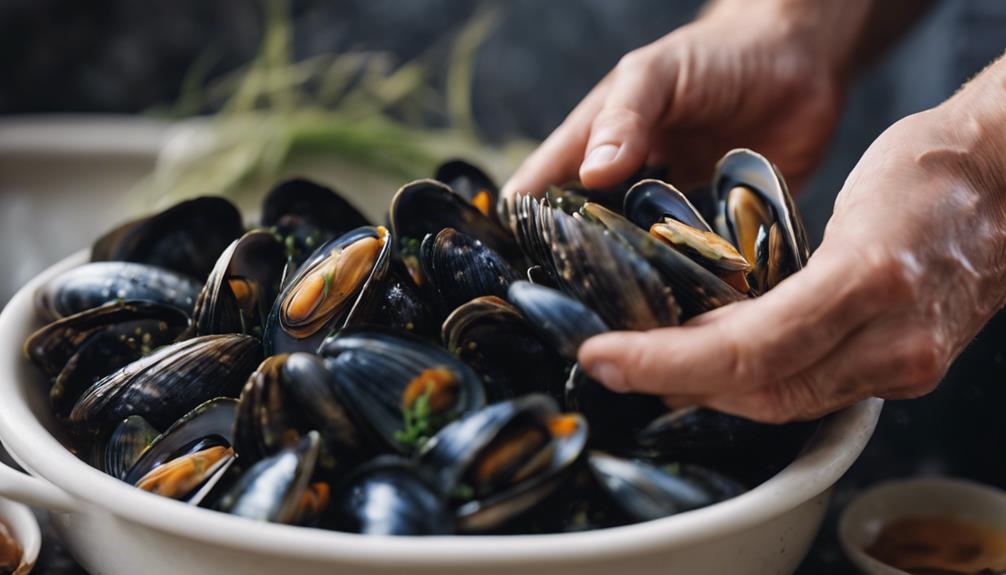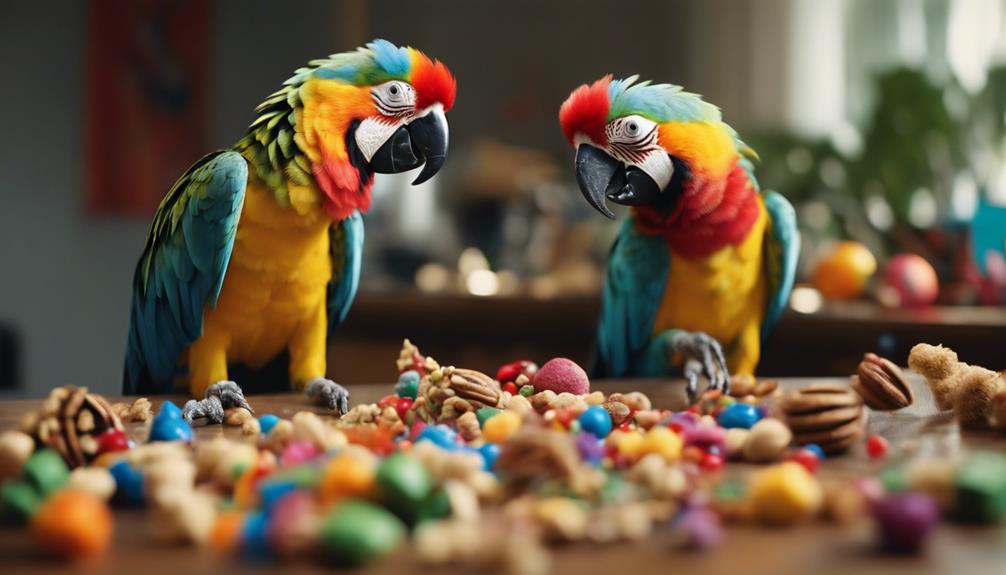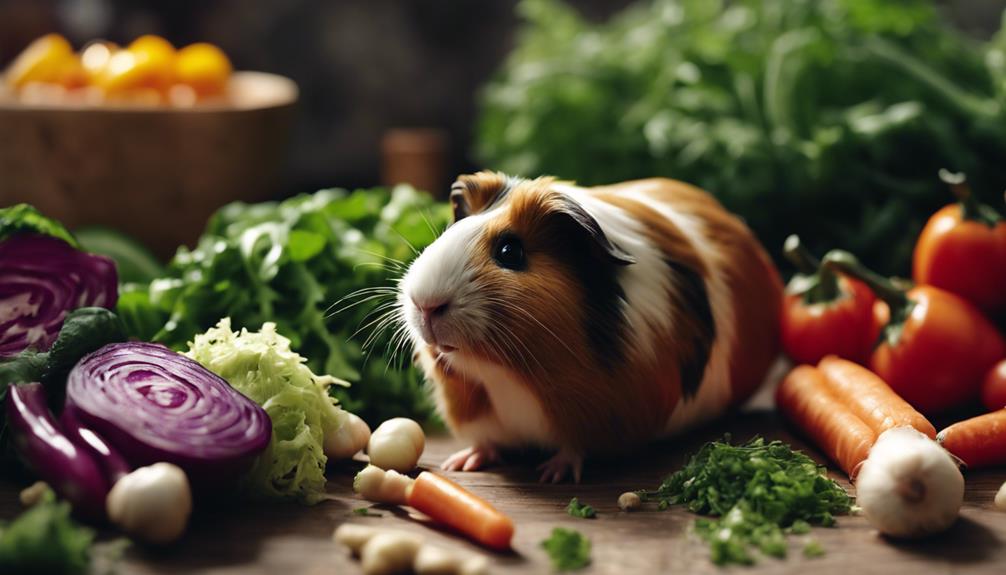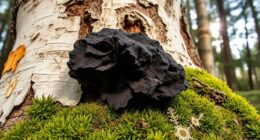Picture this: you’re strolling through a verdant meadow. The sun is gently warming your skin and the air is filled with the sweet scent of wildflowers. All of a sudden, you spot a fragile plant adorned with small white flowers. Curious, you crouch down for a better view. It’s chickweed – a wild edible that has the potential to transform your culinary creations.
Our ancestors knew the value of wild plants for food and healing. They used these plants to nourish and heal. Now, it’s your turn to bring this ancient wisdom into your kitchen.
Chickweed, or Stellaria media, grows in many places, like gardens and woods, across North America. It tastes mild and is packed with nutrients. This makes it great for salads and cooked meals. Adding chickweed to your dishes, like stir-fries or pestos, brings a fresh taste.
Key Takeaways:
- Wild edible plants have been used for centuries for their nourishing and healing properties.
- Chickweed is a common wild edible with a mild flavor and high nutrient content.
- Chickweed can be used in various recipes, including salads and cooked dishes.
Wild Edible Plants
Wild edible plants are a treasure in nature. They are not just food but also have amazing healing qualities. For those who love to explore or enjoy trying new things, these plants bring a world of flavors. They connect us more deeply with the earth.
Foraging for wild plants is a tradition that brings us closer to nature’s gifts. Finding these plants is an exciting adventure. It enriches our meals in special ways. Learn about these plants and how they can be used in cooking and healing.
These plants are more than just tasty. They are full of nutrients that are good for our health. Imagine using foraged greens and colorful flowers to make your meals. Doing this brings the beauty and power of nature right onto your plate.
“Foraging for wild edibles not only provides nourishment for the body but also strengthens the energetic connection to the land.”
There are many wild plants, each with its own unique taste and health benefits. We will look at some interesting ones like chickweed, peppercress, dandelion, violet, and ground ivy. They all have something special to offer.
Before you start picking wild plants, there are things to remember. Make sure you know what you are picking and that it’s safe to eat. Be respectful of nature and only take what you need. With a little knowledge and adventure in your heart, foraging can be a wonderful experience.
| Wild Edible | Scientific Name | Flavor | Characteristics |
|---|---|---|---|
| Chickweed | Stellaria media | Mild | High in nutrients |
| Peppercress | Lepidium spp. | Related to broccoli, mustard greens | Distinctive characteristics |
| Dandelion | Taraxacum officinale | Bitter | Culinary uses |
| Violet | Viola spp. | Mild | Colorful flowers |
| Ground Ivy | Glechoma hederacea | Strong | Mint family |
Chickweed
Chickweed, known as Stellaria media, is a great find for foragers. Often seen as an unwanted guest in gardens, it’s much more than that. With lovely leaves and small white flowers, it adds beauty and taste to meals.
Chickweed tastes mild and slightly sweet. This makes it good for many dishes. Enjoy it raw in salads or as a fresh garnish.
It’s not just tasty; chickweed is full of good nutrients. It has vitamins A and C, calcium, iron, and potassium. Adding it to your food boosts both flavor and health.
Chickweed is everywhere, easy to mix with food, and good for you. Next time you see it, try adding some to your cooking. You and your body will be happy you did!
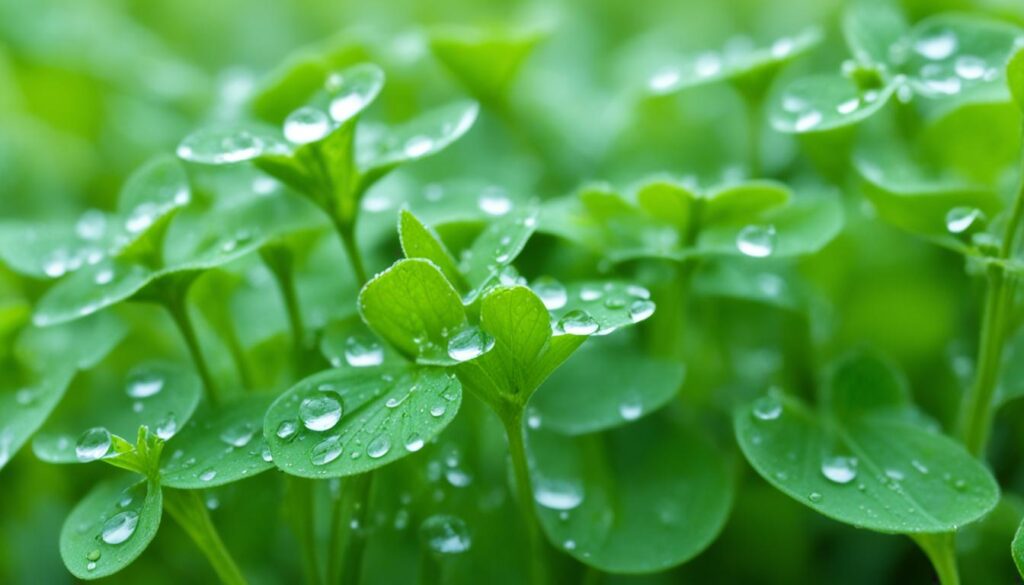
| Benefits of Chickweed | Nutritional Content |
|---|---|
|
|
Peppercress
Peppercress is known scientifically as Lepidium spp. It’s a wild plant that many people don’t notice, yet it’s full of cooking possibilities. It belongs to the same family as broccoli and mustard greens. What makes it special are its unique features.
Its name comes from its peppery taste. The leaves and stems add a spicy kick like black pepper to foods. Plus, its bright green leaves are pretty on the plate.
But peppercress isn’t just about taste; it’s also nutritious. It’s rich in vitamins A, C, and K, besides having calcium and iron. Adding peppercress to your meals boosts both flavor and health benefits.
Finding peppercress involves knowing where to look. It grows up to 20 inches tall in fields, gardens, and other spots. Look for small white flowers at the top, which attract bees and beautify the place.
Peppercress is not hard to grow, which is why many gardeners like it. You can grow it outside or inside in pots. It grows quickly and adapts well to different environments, ensuring you have fresh greens all year.
Peppercress Salad Recipe
Want to try peppercress in your meals? Here’s a simple peppercress salad recipe:
- Wash and dry a good amount of peppercress.
- Mix peppercress with salad greens, cherry tomatoes, cucumber slices, and feta cheese in a bowl.
- In another bowl, mix olive oil, lemon juice, honey, and a pinch of salt and pepper for the dressing.
- Drizzle the dressing over the salad and toss well.
- Enjoy the salad by itself or with added grilled chicken or shrimp for a full meal.
Next time you find peppercress while foraging or at the farmer’s market, try it. Its unique peppery flavor makes it a great addition to your recipes, opening new doors for your culinary skills.

Dandelion
The dandelion is a star in the world of wild edibles. It’s known for its bright yellow flowers and nutritious leaves. It adds not just color but also value to gardens or meadows.
This plant’s bitter taste makes your meals more interesting. You can use it in salads, stir-fries, teas, and pestos. This adds a complex flavor to your cooking.
Dandelions are more than tasty. You can eat the whole plant. The leaves, stems, flowers, and roots all have unique benefits. Young leaves are great in salads. Flower petals can make wine or be used in oils.
But there’s more. Dandelions are packed with vitamins A, C, and K. They also have minerals like iron and calcium. These plants help detox the body and support liver health.
Want to try them? Pick the leaves in early spring. They’re most tender then. Make sure to find plants not treated with pesticides. Wash them well before using.
Here’s a simple salad recipe:
- Pick fresh dandelion leaves.
- Wash and dry them.
- Mix with olive oil, lemon juice, and sea salt.
- Add cherry tomatoes, cucumbers, and feta cheese.
- Top with toasted pine nuts.
This salad is a great way to enjoy dandelions. Try different recipes and be creative. You’ll love what you can make!
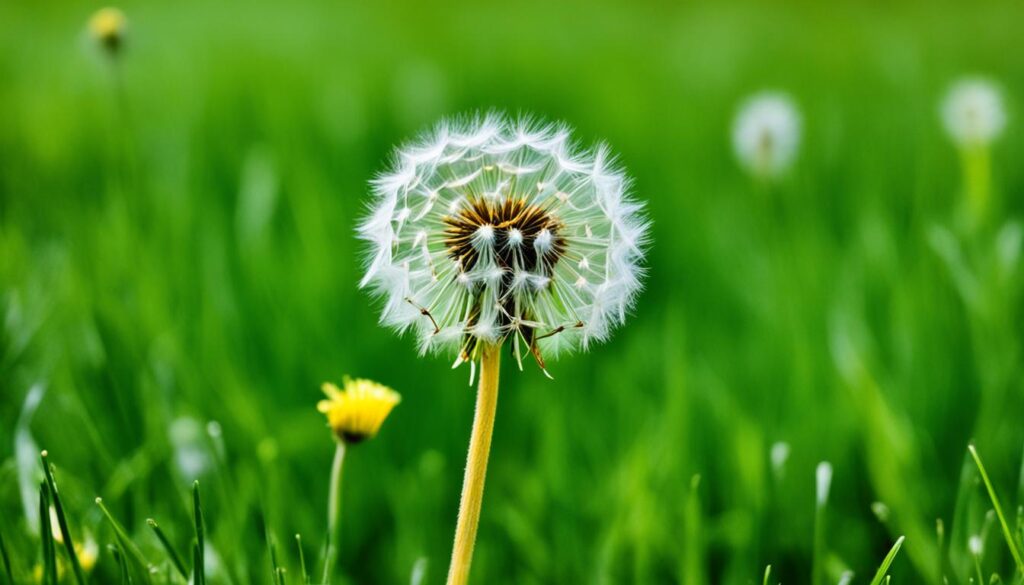
Violet
Want to make your meals more colorful and tasty? Use violets. These flowers belong to the Viola spp. family. They make your food look and taste great.

Violets come in many colors, like deep purple, soft pink, yellow, and white. They make your meals look amazing. You can use them in salads, desserts, and drinks.
“Violets are like little edible works of art. Their vibrant colors can transform an ordinary dish into a feast for the eyes.”
Violets taste mild and sweet. They work well with fresh greens, citrus, and light dressings. They make savory salads and pastries taste better.
But there’s more to violets than just looks. They have antioxidants, vitamins A and C, and minerals like potassium. Eating them can boost your immune system and keep you healthy.
Violets in History
Ancient Greeks and Romans used violets in food and medicine. They thought violets could calm you down. They were used in many herbal remedies.
In Victorian times, people loved violets. They symbolized modesty. Nobles liked their scent in perfumes, teas, and sweets.
Using Violets in Your Kitchen
Make sure to get violets from safe places. They should not have pesticides on them. You can find them in gardens or wild areas. Be sure you know the type you are picking.
Here are fun ways to use violets in cooking:
- Add violet petals to salads for color and taste.
- Brew tea with violet flowers for a calming drink.
- Make violet syrup for cocktails or desserts.
- Use crystallized violets to decorate cakes for a special touch.
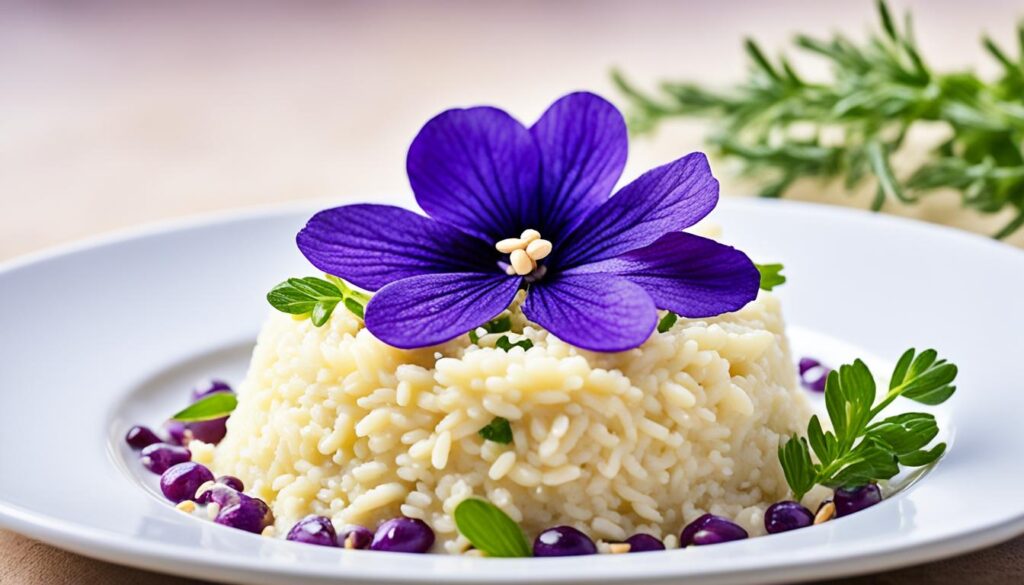
| Recipe Ideas | Description |
|---|---|
| Violet Salad | A refreshing mix of fresh greens, violets, citrus, and light lemon vinaigrette. |
| Violet Lemonade | A colorful drink with violet petals, lemon juice, and sweetness. |
| Violet Macarons | A French treat with violet flavor, violet buttercream, and crystallized violets. |
Try adding violets to your food. They bring color, taste, and joy to your meals. They make eating a fun experience.
Ground Ivy
Ground ivy, known as Glechoma hederacea, is part of the mint family. It’s a flavorful wild plant that can spice up meals. It gives a special taste to many dishes because of its unique scent and flavor.
This plant spreads in shady spots, around woods, and within lawns in North America. You’ll recognize it by its heart-like leaves and bluish-purple flowers.
People have used ground ivy for health reasons for a long time. It helps with breathing and digestion issues. The leaves’ essential oils are key to its minty smell and health benefits.
“Ground ivy enriches salads, soups, and stir-fries with its robust flavor. It mixes well with other herbs and spices, making it a handy kitchen ingredient.”
To pick ground ivy, take the leaves and stems carefully. Make sure you gather from clean, safe areas. Always wash the leaves well before adding them to your food.
Recipe Idea: Ground Ivy Pesto
- Pick a lot of ground ivy leaves.
- Mix the leaves with garlic, pine nuts, Parmesan, and olive oil in a blender.
- Blend until it’s creamy. Change amounts to taste.
- Enjoy the pesto with pasta, on snacks, or with grilled veggies.
Using ground ivy in recipes brings new flavors and lets you explore wild foods. Always pick plants carefully and think about the planet. Enjoy your meal!
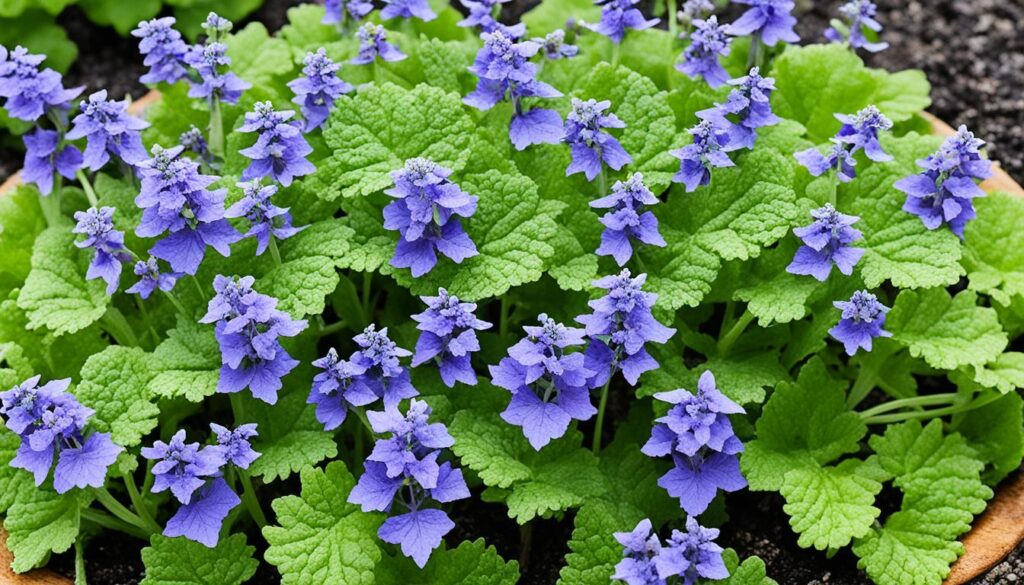
Making a Salad with Your Wild Edibles
Now you’ve found the beauty of wild edible plants. It’s time to use them in your cooking. Making a salad with these plants adds a special touch to your meals. It connects you with nature’s rich offerings. Let’s look at how to pick and use these greens in tasty salads.
Harvesting Techniques
It’s key to pick wild edibles the right way. This keeps nature safe and makes sure there’s more for later. Here’s what to remember:
- Know the plants well: Learn about the edibles you want to pick. Look at their leaves, flowers, and how they grow. This helps you not mix them up with harmful plants.
- Don’t take too much: Just pick a little from each plant. This leaves enough for them to grow back and feeds the animals, too.
- Pick clean, healthy plants: Choose plants that look good, without damage. Make sure they haven’t been sprayed with chemicals.
- Use the right tools: Bring garden scissors or a knife. This way, you can cut the plants gently, without harming the ones nearby.
Recipe Ideas
Be creative with your wild greens. Mix them with other fresh foods for a tasty salad. Here are some recipes to inspire you:
- Wild Violet Salad: Pick violet leaves and flowers. Mix them with greens, goat cheese, walnuts, and a tasty vinaigrette for a beautiful salad.
- Dandelion and Chickweed Salad: Use young dandelion and chickweed. Add them to arugula, tomatoes, radishes, and a lemon dressing for a fresh salad.
- Peppercress Caesar Salad: Mix peppercress with romaine, Parmesan, croutons, and Caesar dressing for a spicy take on a classic dish.
Try different mixes of wild plants, fruits, herbs, and other fresh ingredients. Make your special salad. Let the flavors of nature surprise you.
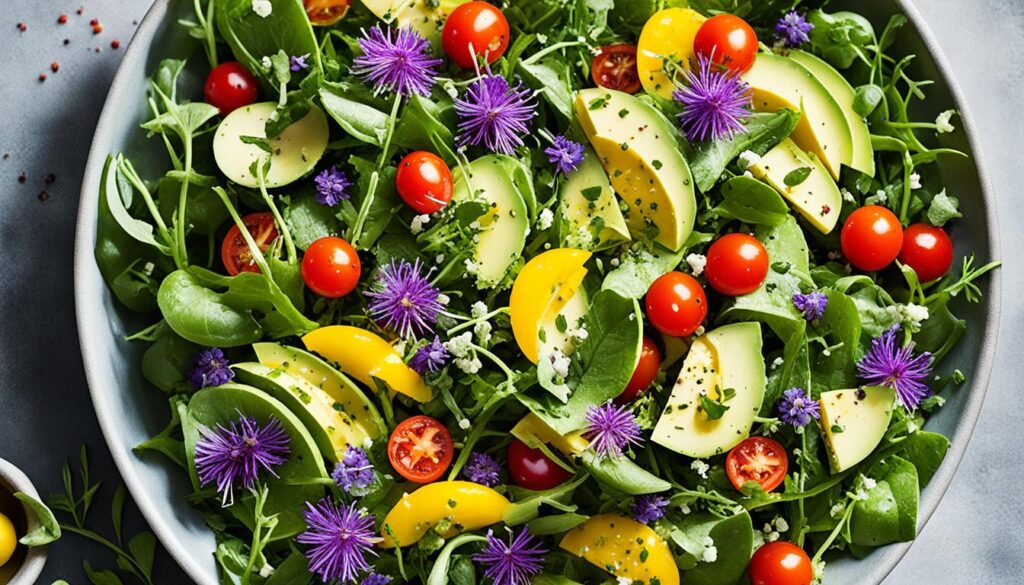
Foraging is more than cooking. It’s a chance to feel closer to nature. Put on your walking shoes, go outside, and enjoy finding and eating nature’s gifts.
Wild Edible Plants for Wild Women!
Getting to know wild edible plants is a big step towards embracing our wild side. Our foremothers knew the healing and culinary uses of these plants well. By learning about these plants, we can feed our bodies and spirits, celebrating our wild nature.

Embracing Nature’s Bounty
Women have always seen the beauty in the wild and its healing power. They knew that wild plants were more than weeds; they were food and medicine. Foraging for these plants connects us to the wisdom of our ancestors and to nature itself.
“Foraging for wild edibles nourishes our bodies and connects us deeply with the land. It empowers us to rediscover our wildness.” – Jane Doe, Herbalist and Foraging Expert
Empowerment Through Knowledge
Learning about wild plants makes us stronger. It lets us reclaim ancient wisdom and connect with our natural instincts. Getting to know these plants boosts our confidence. We can then use them to make our meals more interesting and healthy.
Nurturing the Body and Soul
Wild plants are rich in health benefits. They can improve our immunity and lessen inflammation. Adding them to our diet not only enhances flavor. They also give us vital nutrients. By gathering them, we get closer to nature. This heals both our bodies and minds.
Rediscovering Our Wild Side
In today’s busy world, it’s important to connect with nature. Gathering wild edibles helps us break free from modern pressures. It lets us tap into our basic instincts. While exploring nature, we feel free and happy.
The Wild Edible Sisterhood
By foraging, we join a community of women who love the wild. We share tips, exchange recipes, and support each other. Together, we value what the earth gives us. We empower each other to live fully and authentically.
So, venture into the world of wild edibles. Let them feed your body and spirit. Celebrate your connection to nature. Revitalize your meals and strengthen your bond with the outdoors. It’s time to embrace your wildness and the gifts of nature!
Conclusion
Exploring wild edibles can change your cooking game. Adding these plants can diversify flavors and bring nature’s best to your meals. Chickweed, dandelions, and violets each offer unique tastes and nutrients.
Foraging brings excitement to cooking and connects you to the land. By harvesting these plants, you appreciate our natural abundance more. It’s a way to find peace and feel empowered, deepening your bond with Earth.
Start a wild edible adventure today. Look in your backyard or visit local parks and forests. Wild plants are nature’s treasures, ready to be discovered. They can enrich your meals and nourish you, all while you enjoy the outdoors.




